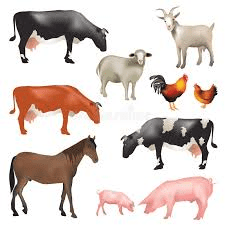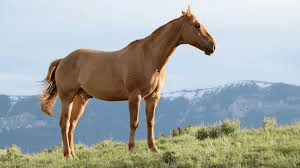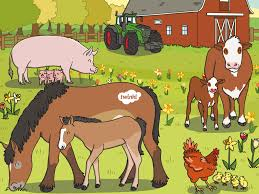This implies how long farm animals can live before they die naturally. Well, being food animals, it is difficult to predict this because almost all of the time they are not allowed to reach its full age before they are being slaughtered. Therefore, knowing their life span may be difficult.
However, I have seen some farm animals like Sheep and Goat of five years and Cattle of fifteen years before.
The Life Expectancy of Farm Animals
What is the relationship between the size of an animal and how long it lives? This interesting topic raises lots of questions, many quite pertinent to our modern lives. It begs for a bit of mathematical scaffolding.
How old would a cow, a pig or a hen live to be if they were not slaughtered?
Surprisingly, it is not an easy task to find out the average natural life expectancy of so-called livestock. Neither farming textbooks nor expert journals make this information readily available.
This is particularly sad because it shows that the actual life expectancy of these animals is of no significance to the farming industry. The ideal age for slaughter, on the other hand, is easily found in many textbooks and agricultural fact sheets.
In fact, the severe genetic manipulations that have been made to today’s farm animal breeds, particularly those raised for meat, make it difficult for them to survive past “slaughter age” because their limbs and organs can’t handle the strain of their over enlarged bodies.
Comparing the average length of their lives as farm animals with their potential maximum life expectancy reveals a huge discrepancy. The potential life expectancy of all species of farm animals is several times higher than the age at which they are slaughtered.
Read Also: Livestock Farming: Best Route of Drug Administration for Ruminants
Below are pictures of different animals and their life-span to assist you understand better:







Read Also: How to Neuter (Castrate) Ruminant Male Animals: Risks and Benefits
Life-Spans of some Farm Animals
Animal
Average Life Span of Animal (in years)
African Grey Parrot
50
Amazon Parrot
80
Angleworm
15
Ant (Queen)
3
Ant (Worker)
1.5
Asian elephant
40
Cockatoo
40
Bat
24
Bear
40
Beaver
20
Bison
30
Blackbird
18
Boa Constrictor
23
Bottlenose Dolphin
20
Box Turtle
123
Bull
28
Bull Snake
18
Canada Goose
33
Carp
100
Cat
25
Catfish
60
Chicken
15
Chimpanzee
40
North American Cicada
13-17
Cow
22
Crocodile
45
Deer
35
Dog
22
Eagle
55
Elephant
70
Elk
22
English Sparrow
23
Fence Lizard
4
Ferret
12
Fox
14
Galapagos Land Tortoise
193
Giant Tortoise
152
Goat
15
Golden Hamster
4
Gorilla
20
Great Horned Owl
68
Green Frog
10
Hog
18
Horse
40
Human
70-80
Humming Bird
8
Kangaroo
9
Koala
8
Lion
35
Lobster
15
Macaw
50
Mountain Lion
20
Mouse
4
Newt
7
Opossum
4
Parrot
80
Polar bear
20
Porcupine
20
Quail
6
Rhinoceros
40
Salamander
11
Sea Lion
14
Tasmanian Tiger
7
Wombat
15
Wolf
18
Farm Animals live longer?

It has been well known for a long time that larger species tend, on average, to live longer. However there are also some anomalies—often birds, fish or tortoises. Let’s have a look at some data.
The average farm animal lives only for a certain number of years. Do you know which ones? Knowing how long goats live or how long pigs and chickens live on average is important to know before investing in them.
As a homesteader, investing in your homestead, growing your farm by raising poultry is one of the best you can make. Anyone that is self-sufficient, will be raising their own animals for food.
Cattle, hogs and poultry are all raised in confinement-production facilities, and on a vast scale. While aspects of their lifecycles are the same, in an industrial system their considerably different sizes and physical needs require each group of animals to fit into confinement-based production processes differently.
The smaller the animal, the more easily it is raised within an industrial model; for this reason, chickens spend their entire lives in confinement, while beef cattle spend much of their lives outdoors on pasture before being consigned to a feedlot.
For animals who go through several stages of production, opportunities exist for more or less humane treatment at various points in the production process; and each stage has implications for the livelihoods of farmers and workers.
Animals raised entirely on pasture require more land, labor and time to grow to market weight. As a result, meat and dairy products from animals raised with higher standards for the animal’s welfare and for the environment are more expensive.
Generally, the cost differential is in inverse proportion to the animals’ size: pastured beef tends to be about twice as expensive as industrially-raised, while pastured chicken can cost four to six times as much as industrially-raised.
Read Also: Complete List of Crops Introduced into Africa
Frequently Asked Questions
We will update this section soon.

